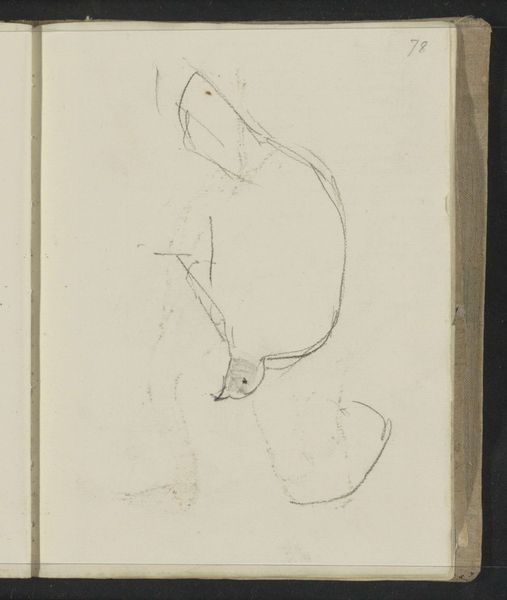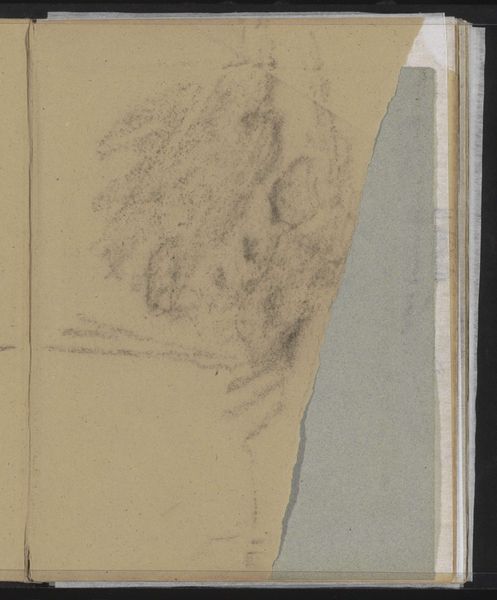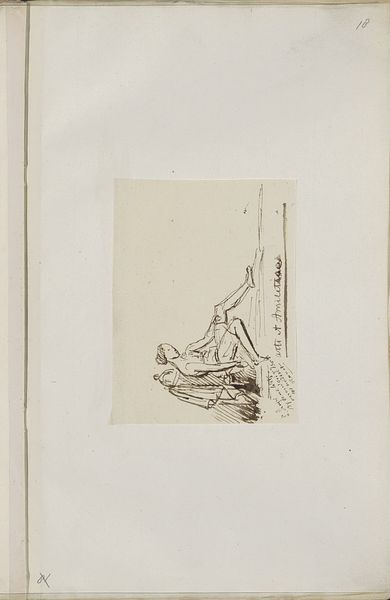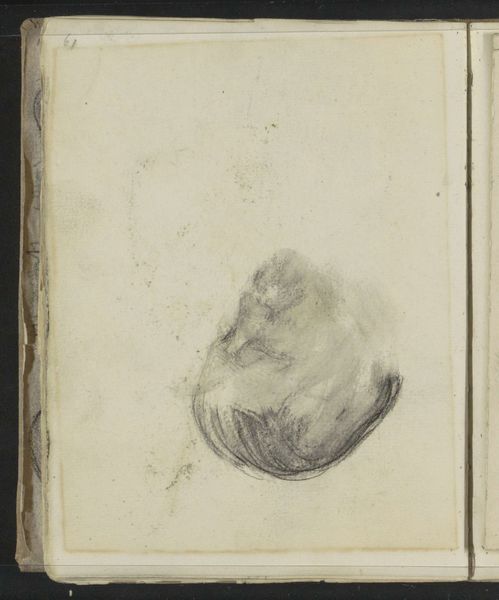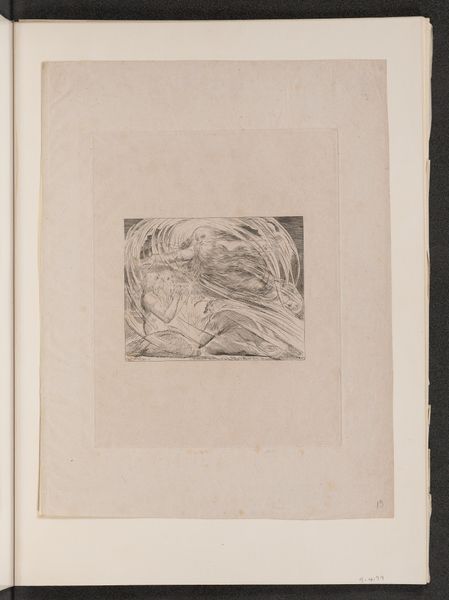
Copyright: Rijks Museum: Open Domain
Editor: Here we have "Aap," a drawing by Floris Arntzenius, made sometime between 1883 and 1914. It appears to be a pencil and watercolor sketch on aged paper, almost like a page torn from a sketchbook. What strikes me is how ephemeral the figure seems; it's there, but barely. What can you tell me about it? Curator: What grabs me is its raw, unfiltered state. Look at the material conditions of its creation: pencil, watercolor, cheap paper likely bound in a humble sketchbook. It speaks to a process rooted in immediacy, documenting a fleeting moment rather than striving for polished perfection. How might its creation as a quick sketch in a commonplace sketchbook influence our understanding? Editor: So, you're suggesting that the casual nature of the materials and the sketch itself actually gives us insight into the artist's process? Curator: Precisely! Arntzenius isn't presenting us with a finished artwork intended for display, but rather offering a glimpse into the labor of observation and the development of an idea. The toned paper adds to this, signifying time and use - suggesting that it was carried with Arntzenius over time. What does the presence of "aged" materials say about artistic creation, historically? Editor: That’s interesting. So, it’s almost like the medium itself is part of the message, suggesting the artist’s hand and the passage of time. Does this challenge traditional distinctions between art and craft? Curator: Absolutely! By focusing on the labor and materiality inherent in the artwork, we are shifting our attention away from the art object as something precious. The drawing, with its visible lines and hasty application of watercolor, becomes a testament to the artist’s process. This invites viewers to critically engage in labor practices and artistic consumption. What does this artwork reveal about the broader artistic economy in Arntzenius’ time? Editor: That definitely gives me a new way to appreciate it. I was initially drawn to its simple beauty, but I see how analyzing the materials and process reveals much more. Curator: Exactly! By considering art as a product of material and social conditions, it fosters richer discussions of value and production. We discover new methods of artistic creation that were only possible with material evolutions across different centuries.
Comments
No comments
Be the first to comment and join the conversation on the ultimate creative platform.



